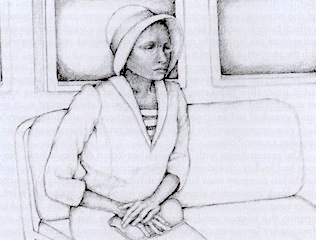|
J. William T. "Bill" Youngs, American Realities, Volume Two:
Historical Episodes from Reconstruction to the Present, Chapter Twelve |
"Martin Luther King Jr." courtesy of the Wikipedia Commons
|
12. The Civil Rights Movement
|
SummaryThis essay begins by surveying early civil rights activities including the formation of the NAACP. We then focus on events in Montgomery that began the modern civil rights movement and the events in Birmingham that tipped the balance of public support towards a civil rights bill. We follow Martin Luther King, Jr. career through these episodes and read his classic statement about the evils of segregation in the letter from Birmingham jail.
|
Author reads from the Text
King’s method consisted of nonviolent resistance to oppression. He regarded the civil rights movement as a great moral struggle between the oppressor and the oppressed; the villain was the person who lived by injustice, and the hero was the person who resisted tyranny without being degraded by it. Cowards ran from injustice; knaves became corrupted in fighting it. But the virtuous won the struggle by forcing the oppressors to reveal their cruelty to the world; for when the cruelty of segregation was fully exposed, no right-thinking person would accept its continuation. At Birmingham, King believed, the mindless villainy of segregation had been revealed in all its tawdry colors, and the heroic persistence of integration had won a great moral and political victory.

